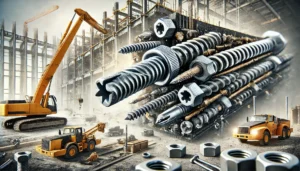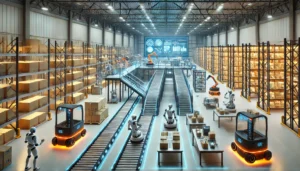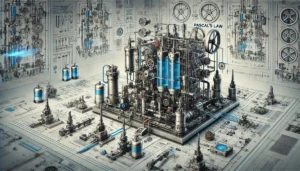Pipe supports may seem basic, but they are a crucial component in the design and engineering of a process plant. Piping in industrial plants is crucial for the transfer of fluids, gases and chemicals. A properly designed set of pipe support systems ensures the effective and safe use of back piping systems. An ineffective pipe support system leads to potential hazards, bad operational procedures and excess costs.
In this blog article, we will take a look at the significance of the pipe support system design, the issues around bad design and how to come up with an effective support system design.
Preservation of the Structure
Pipes in process plants are subject to high loads, which include the weight of the pipe itself, the weight of the medium in the pipe, and material for insulation. Over a long period of time, these loads become a threat to key areas of concern such as joints and fittings. The prime objective of good pipe support design is the even distribution of the load such that the likelihood of sagging, deformation, or sagging is effectively managed.
If there is poor support for the pipelines, there is likelihood of pulling down the weight of the pipes which leans to either ruptures or leakages. For instance, a pipe carrying corrosive materials from the chemical plant which is not properly supported may fail leading to destruction of equipment and danger to the working environment.
Avoiding Dynamic Loads and Sway
In process plants, the piping networks can also be exposed to dynamic forces including pump and compressors vibrations and turbulence in the line. Poorly designed piping supports are unable to suppress these vibrations which overtime can lead to fatigue and ultimately the cracking of the pipe. Eventually, this will affect the dependability of the system and might increase the chances of the system facing unplanned downtimes.
Furthermore, forces like thermal expansion and water hammer can cause the piping to experience intense pressure. Adequate pipe supports are able to account for these dynamic loads and forces, preventing the system from being damaged. Overlooking these aspects can lead to massive repair costs and halt.
Considering Thermal Expansion and Contraction
As pipes in process plants tend to be exposed to extreme temperatures, they will tend to expand and contract. If the design of the pipe support structure would not take thermal movement into consideration, internal stresses that are too large for the materials would develop in the piping. As a result these would likely lead to the material cracking, crippling, or even the joints breaking.
For example, in a power plant, steam pipes expand greatly when heated. For such cases a flexible support system that includes things like spring hangers and sliding supports will ease the pressure on the pipe and help it retain its shape. If a pipe does not have enough flexibility to undergo thermal expansion, the pipe can undergo severe corrosion which will increase maintenance.
Improving the Efficiency of Operations
A properly designed pipe support system enhances the effectiveness of a process plant as a whole. It enables proper alignment of pipes and relative positioning of the pipes within the operating conditions thereby reducing instances of pressure drops, flow rate restriction or even turbulence. Pipe supports which have not been adequacy designed tend to lead to flow distortions and increased power usage because they cause pipes to be out of alignment.
In addition, accurate pipe support systems diminishes the need for repairs and inspections. Pipelines which are well supported are subjected to low operating stresses and thus experience less wear, this increases the durability of the pipeline and reduces repairs and downtime.
Reducing Safety Risks
In all process plants the environment of the workers and the environment around the plant comes first. Poorly supported pipes can be an extreme danger to safety, for instance such pipes may leak hazardous materials, the structure may collapse or there may be a risk of fire outbreaks. For instance a pipeline carrying gas that is flammable and is able to escape because of the lack of support can lead to an explosion that puts lives and property at risk.
Good pipe support design decreases these risks because it brings about stability and prevents failure. Furthermore, it increases conformity to the safety requirements of the industry and the law guiding avoidance of accidents and the costs that arise from them.
Preventing Attempts towards Costly Repairs
A properly designed pipe support which might seem expensive at first glance can sustain maintenance, repairs and downtime costs in the long run. The more poorly designed if not supported pipelines are more likely to exhibit a damaged state far more frequently leading to costly repairs or replacements. Such expenses can pile on forms and even become overwhelming as we have seen especially in petrochemicals and power generation industries as piping systems are vast and an integral part of the process.
The worth of investment in pipe support design should not be overlooked as it tremendously increases the life span of the piping system as well as the equipment. Eliminating such problems allows the plants a chance to maximize their ROI as well as sustainability of the operational aspects and not to mention vibration, thermal and misalignment.
Pipe Support Design: A Brainstorming Session
Quite a few things need to be kept in mind prior to formulating a pipe support design, things such as:
Distribution of Load: All pipes, fluids and insulation need to be supported hence distribution of load is important to prevent convergence.
Thermal changes: In allowing expansion and contraction we are in a way preventing the build up of stress due to temperature changes.
Dynamic Support Forces: The pipe needing to be fabricated needs sufficient dampening of vibrations as well as strong shock loads to alleviate chances of damage.
Material and Corrosion: Appropriate material for the supports is essential as it minimizes corrosion or deterioration materials.
Regulatory Standards: Design of the systems should comply with ASME B31.3 as a standard for safety and reliability.
In Closing
Pipe support design is imperative in the engineering of process plants because it affects safety, efficacy, and inputs cost. Support designed in appropriate manner bears the loads, accommodates expansion and contraction of the piping, reduces vibrations, and improves the overall performance of the system. If the design of piping support is ignored or given inadequate consideration, failures of plants, safety threats and loss of resources may result.
By focusing on sound support systems and developed nations standards, the operational life of the process plants will be enhanced while risks are reduced. Supports of high standard in terms of design will not only protect the facility but will also enhance the safety and efficiency of operations within the facility.










